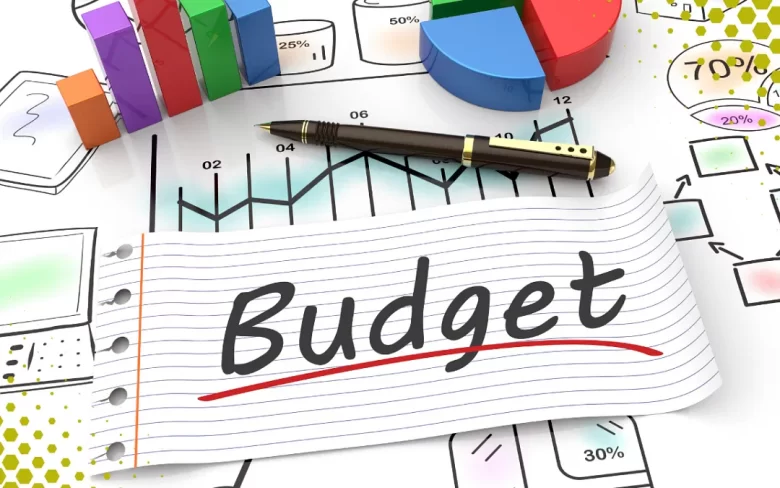Budgeting is crucial to the long-term success of a small business. Without a financial roadmap, a business can overspend, miss sales goals, or face cash flow problems. Accountants create budgets, and business owners need them to track expenses and prepare for growth. Whether you’re starting a business or optimizing your operations, a solid budget can help you make decisions and navigate unexpected challenges. A good budget can help you manage expenses, allocate resources, and prioritize profitable activities.
This article provides a simple yet effective step-by-step guide for small businesses. Understanding sales, forecasting expenses, and monitoring performance can help you create a realistic budget. Let’s review the basics of small business budgeting to ensure your business is healthy.
Understand Your Business Needs and Goals:
Before you start crunching numbers or estimating, you need to clarify your business goals. Do you want to add products, hire more staff, or expand your marketing efforts? Each goal impacts your budget. Your financial plan should reflect these goals to ensure that every dollar contributes to the growth of your business. Knowing your short-term and long-term goals will help you budget and prioritize. Planning without a goal is like driving without a map—you need clear direction to make informed choices. Knowing your needs will help you differentiate between critical and non-critical expenses, keeping your business lean and efficient.
Track and Evaluate Your Revenue:
Next, carefully track all sources of revenue to achieve the best budget. Small businesses may generate revenue through product sales, service fees, consulting fees, or other sources. Be realistic and consult historical data whenever possible. New businesses should study industry statistics to more accurately predict revenue. Knowing your revenue will help you determine how much to spend. Detailed revenue data can reveal seasonal trends and fluctuations, allowing for better planning during slow seasons. Analyzing revenue trends can lead to revenue diversification and profitable growth.
Sort Out Your Expenses:
Once you know your revenue, take stock of your business expenses. Make a list of fixed expenses, such as rent, salaries, insurance, and loans. Then factor in variable expenses, such as utilities, ingredients, and shipping. Also factor in annual subscriptions and equipment upgrades. Categorizing your expenses will help you understand which expenses are the biggest and which can be reduced. A clear overview ensures that you don’t miss payments or run out of money. Financial health depends on keeping track of expenses, which should be updated regularly to reflect business developments.
Separating Business and Personal Finances:
Mixed personal and business finances can make tax returns confusing and complex for many small business owners. A clear financial picture requires that these two areas be kept separate. Use a business bank account and accounting software to track expenses and income. This separation can simplify bookkeeping and improve your credibility with banks, investors, and the Internal Revenue Service (IRS). Intertwining personal and business finances makes it easy to underestimate business profits and make poor financial decisions. Clear records can build a solid financial history for your organization.
Choose a Budgeting Method:
There are several budgeting systems that you can adapt to your small business. The traditional method of estimating annual expenses and revenues is the most common. Zero-based budgeting requires that every dollar be accounted for before it is spent. Some businesses opt for a continuous budget that undergoes monthly adjustments in response to financial performance. Choose a method that fits your business style and goals. Whatever strategy you use, accuracy and consistency are key. Regularly reviewing your budget allows you to respond quickly to market changes and unexpected expenses.
Forecasting the Future:
Budgeting involves managing your finances for the present and the future. By forecasting revenues and expenses, you can predict shortages or surpluses. This information will help you make better financial decisions, such as saving for retirement or entering new markets. Future planning includes saving for crises or opportunities, such as purchasing new equipment or launching a marketing campaign. Your forecast should grow as your business does—review and adjust your budget regularly. A proactive approach will allow you to remain financially flexible and ready to respond to challenges and opportunities.
Monitor Cash Flow Regularly:
Every small business depends on cash flow. Even a profitable business can fail if cash flow is not managed properly. Tracking cash flow helps you gain insight into liquidity and minimize funding gaps. Cash flow statements and accounting software can simplify this process. Cash flow monitoring ensures that you can pay wages, bills, and other expenses without dipping into your reserves. It also helps predict when external financing is needed. Regular cash flow monitoring can enhance strategic and timely decision-making in all areas.
Growth Over Time:
Budgets change as your business evolves. It is advisable to review and update your budget monthly or quarterly. Compare results to forecasts to identify deviations. If you are overspending in one category, reconsider your needs or choices. If you are consistently under budget, you may need to invest more in growth. Let your budget be a real-time guide for your business. Learning from past data can increase the flexibility and efficiency of your future financial model.
Use Technology to Improve Efficiency:
Many software products can simplify budgeting for small businesses. Cloud accounting services like QuickBooks, Xero, and Wave can automatically track and create accurate financial reports. These tools can prevent errors and save time. Many platforms offer forecasting and integration with CRM/payroll. Use technology to keep your financials up-to-date and easily accessible. You can make budgeting decisions faster with better data. Technology can improve the accuracy, security, and efficiency of financial management.
Conclusion:
A small business budget is crucial and can make or break a business. Knowing your goals, analyzing income and expenses, and making smart forecasts can improve the financial health of your business. A budget helps you make day-to-day decisions and plan for the long term by providing control, clarity, and confidence. It prepares you for unexpected setbacks and helps you seize new opportunities. The most successful companies budget continuously, not just once. By regularly evaluating and improving your budget, you can prevent financial problems and move your business forward. Create a solid budget today to help your small business succeed.
FAQs:
1. Why do small businesses need a budget?
A budget helps small businesses manage money, limit expenses, and plan for expansion. It aligns spending with business goals and prevents cash-strapped situations.
2. How often should I change my business budget?
You should review your budget either monthly or quarterly. Update them regularly to ensure accuracy and adjust based on actual financial performance.
3. What is the best budgeting method for a new business?
Zero-based budgeting is useful for new businesses because it requires a rationale for every expense. A standard budget with conservative projections is also suitable for beginners.
4. Can I use my personal bank account for business budgeting?
Not recommended. Separating personal and business funds increases transparency, simplifies tax filing, and gains the trust of lenders and investors.
5. What tools can help with budgeting?
QuickBooks, Xero, and Wave offer tracking, forecasting, and connectivity for payroll/invoicing. These features can help small business owners budget more efficiently and accurately.




